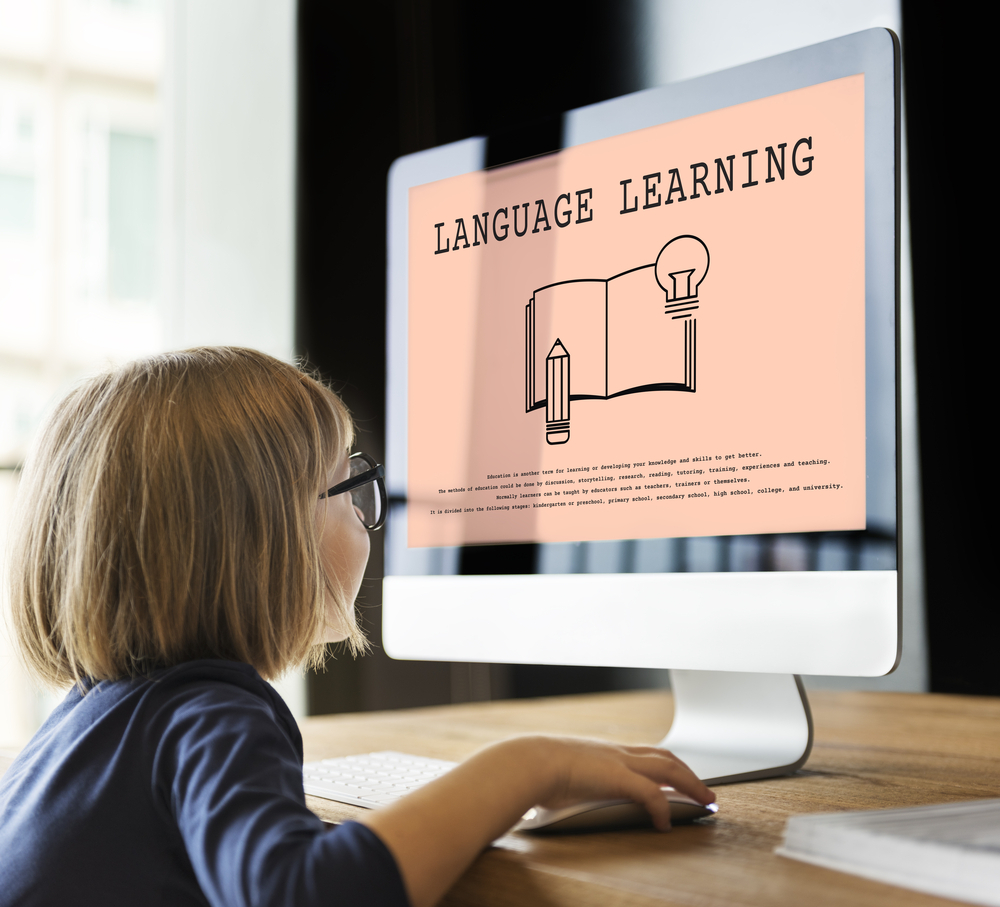
Language comprehension is a foundational skill in early childhood development that sets the stage for future learning and communication. The early years are not just about the acquisition of spoken words but also about understanding the meaning behind them – a process vital to the cognitive and social-emotional growth of young children.
Grasping language is more than a mere milestone; it is a crucial element that influences a child’s ability to follow instructions, express emotions effectively, and engage with the world around them. Research has shown that children with strong language comprehension skills are better prepared for success in academic settings and tend to develop stronger interpersonal relationships.
This involves not only the capacity to understand words and sentences but also the ability to grasp context, make inferences, and understand non-literal language such as idioms and metaphors. As children grow, their language comprehension becomes more sophisticated, allowing them to appreciate stories, understand humor, and interpret complex instructions.
Numerous studies highlight the strong link between early language skills and later academic performance. The National Early Literacy Panel’s report indicates that language development in early childhood is directly connected to future proficiency in reading and writing.
Understanding Language Comprehension in 4-5 Year Olds
Language comprehension during the ages of four to five takes a remarkable leap forward as children begin to harness their linguistic skills more effectively. This stage, often referred to as the preschool years, is a bustling period of cognitive development where children start to engage deeply with the nuances of language and communication.
What Language Comprehension Entails at this Developmental Stage
At the ages of four and five, children experience significant advancements in their ability to understand and use language. Key aspects of language comprehension during this period include:
Vocabulary Growth: Children rapidly expand their vocabulary during these years. They are estimated to learn an average of 2-4 new words a day, a feat that enriches their language comprehension significantly.
Grammatical Development: Preschoolers become more fluent in applying grammar rules, which helps in structuring more complex sentences and better understanding others.
Contextual Understanding: At this age, children start to grasp the context surrounding a conversation. They begin to understand not just the literal meanings of sentences, but also the situational context in which words are used.
Inferences and Predictions: Four and five-year-olds start making inferences based on their comprehension of a story or conversation, allowing them to predict what might happen next or comprehend underlying themes beyond the explicit narrative.
Emotional Nuances: Emotional language and the expression of feelings through words become more discernible to children at this stage. They start to comprehend language cues that indicate emotions, such as tone of voice and facial expressions.
Why This Age is Critical for Language Development
Brain Plasticity: Young children’s brains are highly malleable, making it a prime time for language acquisition. The neural circuits that process language are rapidly developing and are highly responsive to linguistic input.
Foundation for Literacy: The skills gained at this developmental stage are building blocks for reading and writing. Understanding the relationship between sounds and letters (phonemic awareness) is a key component of early literacy, and a strong language comprehension underpins this awareness.
Social Integration: Language skills are integral for social interaction and integration. Children who are more adept at understanding and using language are more likely to successfully engage in social settings, making friends and expressing themselves clearly.
Academic Preparedness: Children who enter school with a firm grasp of language comprehension are better equipped to handle the demands of the classroom. This includes following instructions, engaging in discussions, and comprehending educational material.
To ensure that preschoolers derive the maximum benefit from this critical period of language development, it is essential that caregivers and educators provide a rich language environment. This includes interactive reading sessions where adults actively discuss stories with children, asking them to predict outcomes or explain characters’ actions.
Creating an environment that is abundant with words, encouraging children to ask questions, and consistently modeling proper speech are key strategies that contribute to advanced language comprehension in four and five-year-olds. It is within this fertile period that the seeds of future communication success are sown.

Key Strategies for Enhancing Language Comprehension
Language comprehension is not only pivotal to children’s cognitive development but also serves as a cornerstone for their ongoing educational journey. To enhance this crucial skill, activities must be deliberately structured, and engagement and repetition should be at the heart of these efforts. In this expanded look, we delve into how to strategically design activities and why consistent engagement and repetition are fundamental in nurturing language comprehension.
Consistent Engagement
Children learn best when they are actively involved. By engaging them in conversations throughout the day, asking open-ended questions, or including them in decision-making processes, children use language in meaningful contexts, promoting deeper comprehension.
Positive Reinforcement
Offering praise or positive feedback when a child successfully uses language or understands a complex idea not only encourages them but also reinforces their learning. Consistent acknowledgment of their progress helps sustain their interest and motivation.
Repetition as a Learning Tool
Repetition is fundamental to language learning. Repetitive reading of favorite stories, for example, allows children to become familiar with words and phrases, leading to better comprehension and the ability to decode new sentences.
Tailoring to Developmental Stages
Activities should be age-appropriate. Younger children might benefit more from picture-based storytelling, while older children could engage in more sophisticated conversations about plot and character motivations.
Building a Broad Vocabulary Base
Introducing new words in various contexts and using them in sentences helps solidify understanding. Activities should aim to introduce new vocabulary that is both challenging and relevant to the child’s experiences.
Exercises in Critical Thinking
Activities that require children to draw conclusions or solve problems encourage them to think critically about language. Puzzles, riddles, and simple problem-solving games can serve as effective tools for developing these skills.
Creating an enriching environment for language comprehension pays dividends well into a child’s future. This comprehensive approach to developing language skills helps lay the foundation for effective communication and academic achievement. By focusing on structured activities that emphasize engagement and repetition, caregivers can significantly enhance a child’s ability to comprehend and use language effectively.
Evaluating a Child’s Language Comprehension Development
Understanding and tracking the progression of a child’s language comprehension are essential to ensure they are on the right path toward linguistic proficiency. Here are several strategies for gauging their development:
Take note of how the child interacts with peers and adults, their ability to follow instructions, and their response to new vocabulary. Documenting these observations can provide insights into their comprehension skills over time.
Utilize standardized checklists that outline age-specific language milestones. Be aware that children develop at their own pace, so these should serve as guidelines rather than stringent benchmarks.
Engage in regular conversations and story sessions, paying close attention to the child’s ability to understand questions and concepts, draw inferences, and use new vocabulary appropriately.
Gather input from others who interact with the child, such as teachers, speech therapists, and family members, to gain a comprehensive view of the child’s language abilities.
Adapting Language Activities to Foster Advancing Skills
As children develop their language comprehension, it’s crucial to adapt activities to align with their growing skills. Here are suggestions for tailoring these activities:
Graduated Difficulty: Adjust the complexity of stories or conversations to match and challenge the child’s comprehension levels. Introduce more complex sentence structures or advanced vocabulary as they progress.
Interactive Dialogue: Shift from simple Q&A formats to open-ended discussions that encourage children to express their thoughts and feelings in more detail.
Expanding Topics: Introduce a broader range of subjects and themes in reading materials and discussions to expose the child to new language concepts and words.
Problem-Solving Scenarios: Incorporate activities that require the child to use language for problem-solving, such as interpreting how characters in a story might resolve conflicts.
Encouraging Self-Monitoring: Teach the child to reflect on their own understanding and to ask for clarification when necessary. This helps promote self-regulation in learning.
When applying these strategies, it’s essential to maintain a balance between challenging the child and providing support. This ensures that children remain engaged and motivated without feeling overwhelmed. Regular assessment and adaptation of activities will contribute to a nurturing learning environment where language comprehension can flourish.
Language comprehension equips children with the tools necessary to navigate complex social environments, excel academically, and ultimately, to express themselves and connect with others in meaningful ways.

Fostering Language Comprehension with Patience and Consistency
The journey towards language proficiency is unique for each child, and it is imperative that caregivers approach this process with patience. Recognizing that setbacks are a natural part of learning will help maintain a supportive and positive environment for the child’s growth. Regular, deliberate practice is necessary for the reinforcement of language skills. Frequent interactions, continuous exposure to new words, and the repeated use of structured activities are all proven methods for reinforcing language comprehension over time.
As children develop, the complexity of language activities should evolve with them. Gradually incorporating more sophisticated language concepts will keep them challenged and engaged, without leading to frustration or disinterest. Children thrive with encouragement. Celebrating their successes, however small, reinforces their learning and motivates them to continue exploring the intricacies of language.
Investing time and effort into supporting language comprehension during the early stages of childhood is an investment in a child’s future. It is essential for caregivers to cultivate an environment that not only enhances vocabulary and grammatical understanding but also promotes critical thinking and a genuine passion for communication.
By being patient, consistent, and continually adapting activities catered to a child’s developmental stages, parents and educators can lay a strong foundation for a lifetime of effective communication. Encouraging children to engage with language dynamically and interactively will not only aid their immediate learning but will also equip them with the skills necessary to succeed in every facet of life.
Why Use Readability for Language Comprehension Activities for 4-5 Year Olds
Readability is a powerful reading app that can be your child’s personal reading companion—harnessing the power of interactive voice-based AI tutor to provide real-time feedback and engage your child in a deeply enriching one-on-one learning experience.
With Readability Tutor, you can witness measurable progress through our comprehensive daily and weekly reading reports, ensuring your child is not only keeping pace with their developmental milestones but also advancing confidently in their academic journey.
Reading is not just about words on a page—it’s about understanding the emotions, humor, and complexity of language that enriches our lives. It’s time to give your child the gift of language and communication that will last a lifetime.
Download the Readability Tutor app now and start building a solid foundation for your child’s communication skills. Let’s build a world of readers together!

 Español
Español